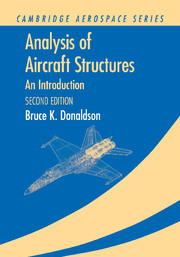Book contents
- Frontmatter
- Contents
- Introduction to the Second Edition
- Introduction to the First Edition
- List of Repeated Engineering Symbols
- Acknowledgments
- Part I The Fundamentals of Structural Analysis
- Part II **Introduction to the Theory of Elasticity**
- Part III Engineering Theory for Straight, Long Beams
- Part IV Work and Energy Principles
- Part V Energy-Based Numerical Solutions
- 16 **Precursor Numerical Analyses**
- 17 Introduction to the Finite Element Method
- 18 Finite Element Truss Problems
- 19 Basic Aspects of Multidimensional Finite Elements
- 20 The Unit Load Method for Determinate Structures
- 21 The Unit Load Method for Indeterminate Structures
- Parts IV and V Review Questions
- Part VI Thin Plate Theory and Structural Stability
- Appendix A Additional Topics
- Appendix B Selected Answers to Exercises
- References
- Index
21 - The Unit Load Method for Indeterminate Structures
from Part V - Energy-Based Numerical Solutions
Published online by Cambridge University Press: 05 June 2012
- Frontmatter
- Contents
- Introduction to the Second Edition
- Introduction to the First Edition
- List of Repeated Engineering Symbols
- Acknowledgments
- Part I The Fundamentals of Structural Analysis
- Part II **Introduction to the Theory of Elasticity**
- Part III Engineering Theory for Straight, Long Beams
- Part IV Work and Energy Principles
- Part V Energy-Based Numerical Solutions
- 16 **Precursor Numerical Analyses**
- 17 Introduction to the Finite Element Method
- 18 Finite Element Truss Problems
- 19 Basic Aspects of Multidimensional Finite Elements
- 20 The Unit Load Method for Determinate Structures
- 21 The Unit Load Method for Indeterminate Structures
- Parts IV and V Review Questions
- Part VI Thin Plate Theory and Structural Stability
- Appendix A Additional Topics
- Appendix B Selected Answers to Exercises
- References
- Index
Summary
Introduction
As was previously noted, all complementary virtual work (CVW) methods of analysis, such as the unit load method (ULM), are force or flexibility types of analyses, and thus are a special case of a stress formulation. The internal CVW terms are always written in terms of force-type quantities such as actual and virtual bending moments, or actual and virtual twisting moments, or actual and virtual axial forces, and so forth. Flexibility is the inverse of stiffness, and these force-type quantities of the internal CVW expressions are always multiplied by the inverse of a corresponding structural element stiffness coefficient such as 1/(EI), or 1/(GJ), or 1/(EA). All force-type analyses always divide loaded structures and their supports into two categories. With respect to force-type analyses, a structure is either statically determinate or statically indeterminate, and the analysis procedure depends upon to which category the structure belongs. When a beam structure is statically determinate, all external support reactions and all internal stress resultants can be calculated by use of equations of force and moment equilibrium. Then the calculation of the internal stresses is simply a matter of algebra. See, for example, for beam extension and bending, Eq. (9.8). The only quantities not immediately derivable from the stress resultants are the deflections. Chapter 20 explains how the ULM can be used to calculate deflections when the structure is statically determinate, or when the indeterminate stress resultants have already been determined by means such as those discussed in this chapter.
- Type
- Chapter
- Information
- Analysis of Aircraft StructuresAn Introduction, pp. 700 - 746Publisher: Cambridge University PressPrint publication year: 2008



